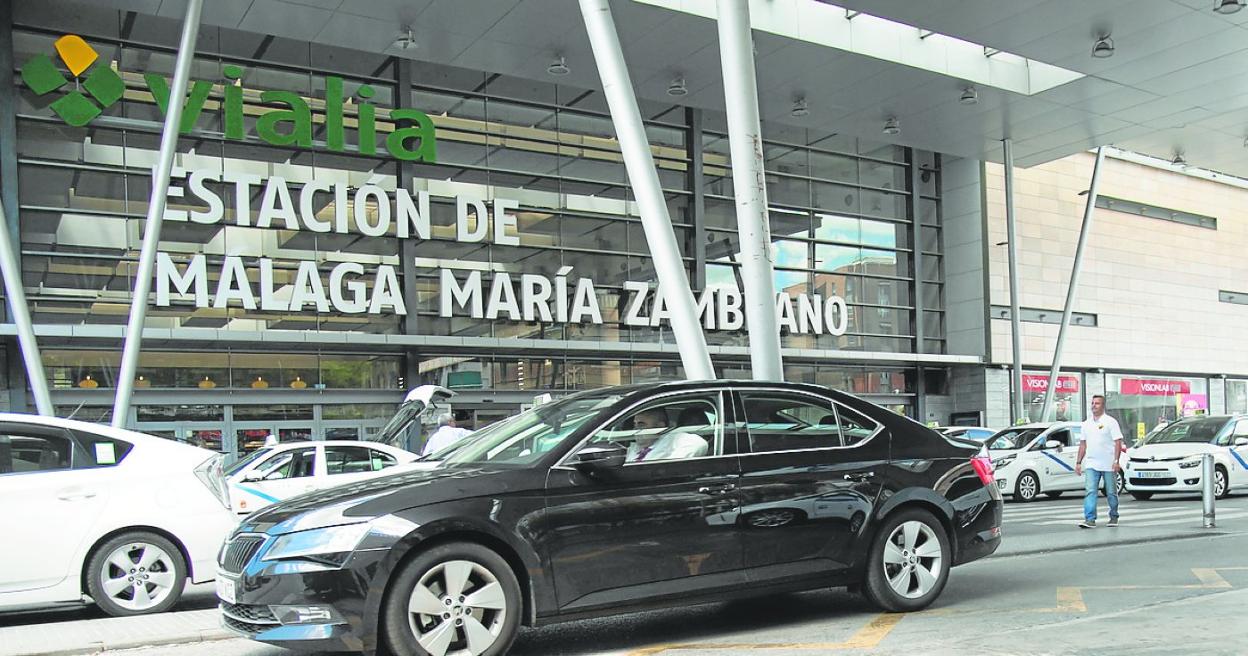

Sections
Highlight

SUR
MALAGA.
Friday, 16 September 2022, 13:16
Companies which hire out vehicles with drivers in Malaga and elsewhere on the Costa del Sol - such as Uber, Cabify and Bolt - will be able to continue operating from 1 October after all, as the Junta de Andalucía has agreed to prepare a new set of rules to regulate their industry.
However, the news has not gone down well with drivers of traditional taxis, who continue to see ride-hailing companies (known as VTCs in Spain) as a threat to their livelihoods. Half the Andalucía region's taxis, including those on the Costa de Sol, went on strike for the day in protest on Thursday this week.
National government has told regional authorities that they must draw up regulations for VTCs themselves. If they don't, ride-hailing companies would only be able to operate between different municipalities and not within a town or city itself. This would effectively make their business model untenable.
For example, without regional rules, Uber-style drivers would be able to drive customers from Malaga Airport to Torremolinos or Marbella, but not from the airport to Malaga city centre. Nor could they pick up in Puerto Banús and drive down the road to Marbella Old Town.
The Junta de Andalucía regional government, having been passed this 'hot potato' by the government, has decided to opt for regulation and the details of their proposal will be published in the coming days.
The Junta is expected to include a raft of measures to safeguard the taxi sector and ensure that it remains profitable. Taxi drivers feel that firms like Uber, Cabify or Bolt have easier conditions than them and that they compete unfairly.
In Malaga province, 2,332 ride-hailing licences have been issued so far, which is practically three-quarters of all those in Andalucía (3,202). In comparison, there are 2,740 taxis in the province and the taxi sector believes this is too many.
The key challenge for regulators is how to ensure VTC cars do not linger around key public buildings, such as stations, airports or hospitals, waiting to be summoned by customer's phones. This is what most annoys the rival taxis.
One possible solution is setting a minimum time delay between the moment of booking an Uber-style car and the time of pick-up.
However, this idea has already been causing problems in other regions of Spain, such as Catalonia and the Balearic Islands, where in some regions the legal gap is 15 minutes and in others it is one hour: the ride-hailing companies are taking legal action to try to get this stopped.
The regional government is therefore now reportedly considering setting up distance limits around key pick-up points instead.
In other words, these special no-waiting zones would be 300 metres around airports, ports, railway stations and bus stations and 150 metres for other points such as hospitals or four-star hotels. Uber-style cars would be forbidden from hovering within those areas unless a customer had already booked them.
Other rules for VTCs to protect taxis may include restrictions on vehicle size or minimum low emission requirements.
Publicidad
Publicidad
Publicidad
Publicidad
Esta funcionalidad es exclusiva para registrados.
Reporta un error en esta noticia

Debido a un error no hemos podido dar de alta tu suscripción.
Por favor, ponte en contacto con Atención al Cliente.

¡Bienvenido a SURINENGLISH!

Tu suscripción con Google se ha realizado correctamente, pero ya tenías otra suscripción activa en SURINENGLISH.
Déjanos tus datos y nos pondremos en contacto contigo para analizar tu caso

¡Tu suscripción con Google se ha realizado correctamente!
La compra se ha asociado al siguiente email
Comentar es una ventaja exclusiva para registrados
¿Ya eres registrado?
Inicia sesiónNecesitas ser suscriptor para poder votar.